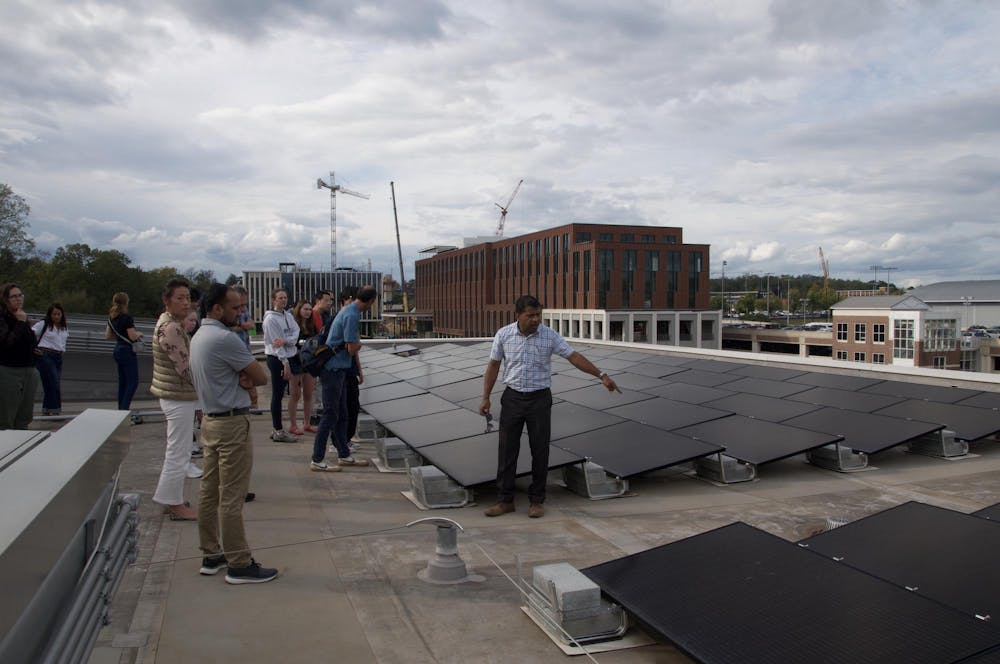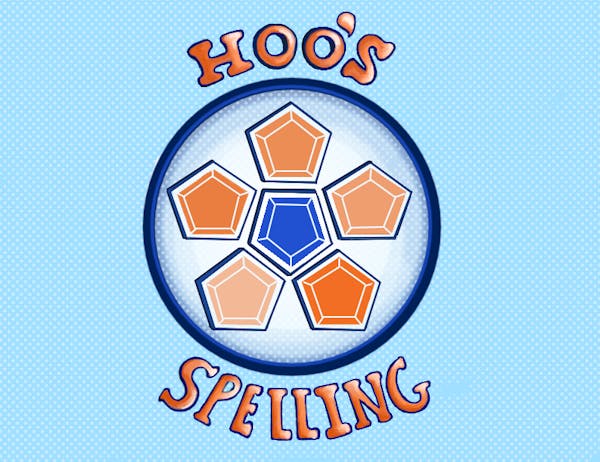Campus Sustainability Month is an international celebration of sustainability in colleges and universities across the world, and the University’s Office for Sustainability and Facilities Management joined in this celebration for the first time this October. The focus of the University’s CSM was “Making the Unseen, Seen” through free facility tours and online content throughout October. This theme and events offered the opportunity for the University community to get to know who and what powers Grounds from behind the scenes.
The celebration was created by The Association for the Advancement of Sustainability in Higher Education in 2005 and includes a sample timeline of events throughout the month, though universities can create their own agendas.
Teri Strother, associate manager for sustainability communications, said that a major goal of the month was to appreciate the work that the more than 1,200-person Facilities Management team does to oversee the sustainability work.
“We’ve been told ‘thank you so much,’ because often our work does go unappreciated. We’re on call 24/7, [during] the holiday, in the middle of the night,” Strother said.
Strother was one of the organizers in the Office for Sustainability that pioneered the celebration of CSM at the University. Strother said that the University aimed to showcase recent sustainability efforts throughout the month.
“I think that U.Va. is really a leader in sustainability, but also a leader when it comes to how we steward our buildings,” Strother said. “Anything that we can do to highlight the things that we’re doing is really important.”
One initiative of CSM was Tuesday Tours, and these tours took the groups to different facilities each week of October and were led by facility managers. The tours each lasted about an hour, and tour locations included the School of Data Science’s rooftop solar installation, the main heat plant, the Newcomb Road Chiller Plant and the composting facility.
All of the facilities toured are making changes and experimenting with new processes in order to function more sustainably, and the tours intended to give students a hands-on experience of University infrastructure and introduce them to their sustainable practices. The last tour will occur Tuesday for the Ivy Road Recycling Sort Facility, with a shuttle service provided.
The tour of the School of Data Science’s rooftop solar installation was held Oct. 7, and roughly 30 students learned about the 160 panels that convert sunlight into electricity. The installation is part of the University’s commitment to achieving carbon neutrality by 2030 and fossil-fuel-free operations by 2050.
Across Grounds, the Newcomb Road Chiller Plant tour held Oct. 21 was guided by Justin Callihan, associate director of chiller plants. Callihan led a small group of attendees through the facility, explaining how the University is cooled and current sustainable practice efforts. The chillers across Grounds pump cold water underground to meet other buildings’ cooling demands. The University’s health system, for example, is the largest consumer of the chillers’ cold water.
The chillers are part of several sustainability efforts, including reclaiming more nonpotable water from newer buildings to be used at the chillers. Additionally, to save water, the chiller facilities have been working alongside the University’s heating plants to make use out of the heat dispersed from the process of cooling water.
The chiller tour was the first instance of exposure to University infrastructure for many of the tour-attending students, including first-year College students George Kamberis and Nolan Li. Li said he attended the program because he has a background in heating, ventilation and air conditioning, and Kamberis said he attended the tour after hearing about it through the Public Service Pathways Program.
“I took away that this is a very big part of Grounds because it’s using 25 percent of the [University’s] electricity and water. This one aspect is taking up such a large portion of our attention, and I think it goes to show how important their job is,” Kamberis said.
While the operations of the chillers are complicated, Li said he learned from the tour that the University is putting effort into making its infrastructure more sustainable.
“It was clear that [Callihan] was trying to show us how they were working to make the process more sustainable,” Li said.
The transition to more sustainable practices is slow and difficult to realistically implement, but Kamberis said that he learned that the University is dedicating time to improving sustainability on Grounds.
“He wasn’t afraid to admit that it’s not perfect, but [the University is] trying,” Kamberis said.
According to a tour offered during the month, the heat plants are also implementing new techniques to make University heating more sustainable. The heat plants are currently going through an already approved fuel conversion project to shift away from coal usage towards gas and oil, which was shared at the main heat plant tour. According to an email from Paul Zmick, director of energy and utilities at the University, the transition from coal will reduce the carbon footprint of the University and make resource consumption more efficient.
Another feature of CSM was a series of videos for the Office for Sustainability’s Instagram account touring more facilities, like the pool heating and lighting systems at the Aquatic and Fitness Center and behind the clock at the Rotunda.
Strother hoped the video series would further introduce the University community to places that students cannot typically access.
“What we wanted to do with these [videos] is go to where students can’t go…There’s all these nooks and crannies,” Strother said. “I think the videos are fun because it’s like [a] light bulb. We hope that people say ‘Oh, I didn’t know that.’”
CSM will conclude with a “Thank You” letter-writing event, refreshments provided, for the Facilities Management team. The event takes place Wednesday from 10 a.m. to noon in the Newcomb Hall South Meeting Room.
“I think this is a great program to get the community involved in making the campus a more sustainable place,” Li said.







